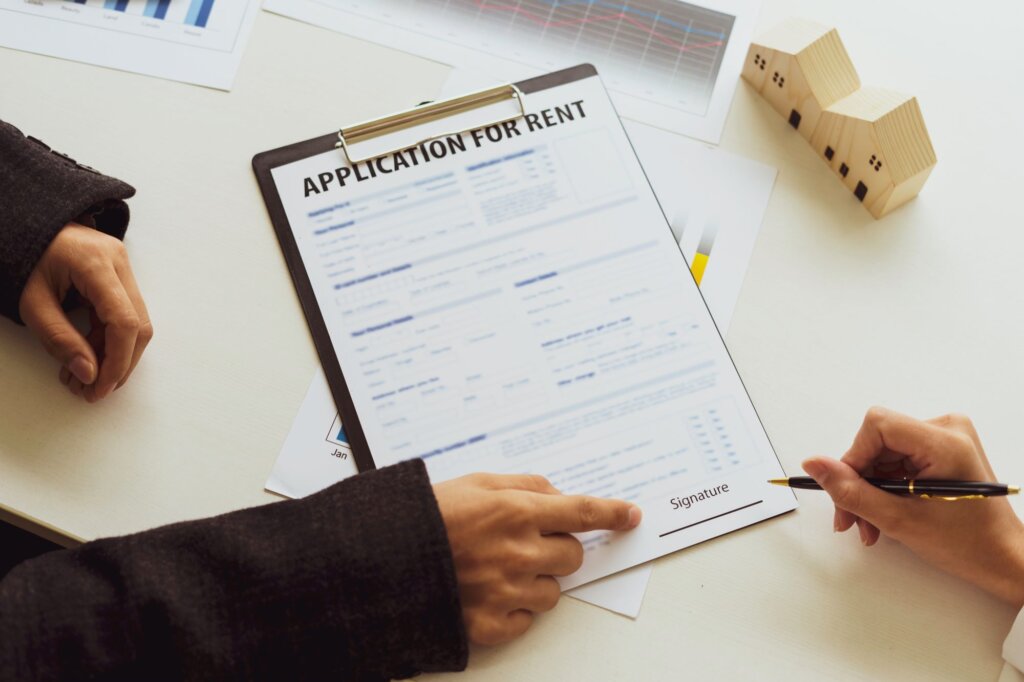Renting your first apartment is a big milestone! It’s exciting, empowering, and can also be a little overwhelming. However, with the right planning, you can find a place that fits your budget, lifestyle, and future goals.
Between understanding your finances and finally preparing for move-in day, there’s a lot to think about. Here are six important tips that can help make the process smoother and set you up for a successful first rental experience.
1. Set a Realistic Budget
Knowing what you can comfortably afford is the first step in the apartment search. Many experts recommend that rent should take up no more than 30% of your monthly income, and many rental companies actually require this 3:1 income-to-rent ratio. But remember, rent isn’t the only housing expense you’ll have.
You’ll want to make sure you factor in additional costs like security deposits, application fees, and moving expenses, like renting a moving truck or hiring a moving company. Don’t forget about ongoing expenses either, like utilities, internet, renter’s insurance, pet fees, or potential parking fees.
If your ideal apartment pushes your budget to its limits, you may want to reconsider. Living comfortably within your means will help reduce financial stress and allow you to enjoy your new space without worrying about money every month. Building a simple budget before you start looking can save you from falling in love with a place that isn’t financially sustainable.

2. Consider the Location
Location can sometimes make or break your rental experience. Think about your daily needs: How close is the apartment to your job or school? Are grocery stores, pharmacies, and other essentials nearby? If you don’t drive, is public transportation easily accessible? If you have a dog, how close would the apartment be to a neighborhood park? Do you want to live in a busy section of town, or somewhere more quiet? These are important factors to think about when looking or touring.
It’s also a good idea to visit the neighborhood at different times of the day and/or week to get a better feel for the area. Consider both convenience and safety—online reviews of the apartment complex and local housing statistics can provide helpful insights. A great apartment in a location that is not ideal for you may cause more headaches than it’s worth.
3. Consider Roommate Compatibility
If you plan to have a roommate, choosing the right person can make a huge difference in your living experience. While sharing an apartment is a great way to save money on rent, it’s important to pick someone who aligns with your living habits and values.
Have an open conversation with potential roommates about expectations for cleanliness, shared expenses, quiet hours, and guests. Are they someone you can trust to pay their share of the rent and utilities on time? Will they help with household chores like cleaning or yard work? Remember that some people might be a fantastic friends, but they may not be your ideal roommates.
It’s also worth discussing any boundaries and dealbreakers before signing a lease together. The goal is to create a living environment that feels comfortable and stress-free for everyone involved.
4. Tour the Unit Before Signing the Lease
It’s not recommended to sign a lease for an apartment you haven’t toured in person (or virtually, if you’re moving from far away). A tour allows you to see the actual condition of the unit and verify that it matches the listing.
Pay attention to details like the cleanliness, water pressure, window functionality, and the overall condition of appliances and fixtures. Don’t be afraid to test things like light switches or ask questions about recent maintenance and repairs. If you notice any issues during the tour, ask the landlord or property manager if they’ll be addressed before you move in.
Touring the unit reduces the chance of surprises on move-in day and helps you feel confident in your decision.
5. Understand the Lease Terms
Before signing a lease, take the time to read it carefully. It’s easy to skim through the tiny print, but understanding the terms of your lease is important for avoiding surprises later. Pay close attention to:
- Lease length: Is it a month-to-month rental or a fixed-term lease (i.e., one year)?
- Pet policies: If you have a pet or plan to get one, make sure the lease permits it and note any associated fees.
- Maintenance responsibilities: Clarify whether you or the landlord/property management company is responsible for things like lawn care.
- Fees and penalties: Are there fees for breaking the lease early, late rent payments, or additional occupants?
Don’t hesitate to ask questions if something isn’t clear, especially as a first-time renter. Understanding your lease upfront can save you from unfortunate misunderstandings down the line.
6. Prepare for Move-In Day
Once you’ve been approved for your first apartment, it’s time to plan for move-in day! Start by setting up utilities like electricity, internet, and water (if you are responsible for it) before you arrive to make sure everything is working when you move in.
Create a checklist of essentials you’ll need, like kitchen supplies, toiletries, cleaning products, and—of course—your furniture. Packing and moving can be a lot of work, so take time to declutter beforehand and only bring items you truly need or love. If you’re on a budget, consider finding secondhand furniture at the thrift store or online or ask family and friends if they have extra items they no longer need. Preparing ahead of time will make your first night in your new apartment feel much more relaxed and welcoming.
Renting your first apartment is an exciting step toward independence, but it’s also a big responsibility! Setting a realistic budget, choosing your ideal location, understanding your lease, and preparing ahead for move-in day can make the process a breeze. A little extra planning and know-how can go a long way in creating a stress-free moving experience.